Medical breakthrough as Swedish woman becomes world’s FIRST to get pregnant after having a womb transplant performed using a robot
- Womb transplants have produced 13 babies so far around the world
- But the procedure had only been successful when done by human surgeons
- Using a surgical robot reduces the damage and recovery time for the donor
- A woman in Sweden is the first to get pregnant and is expecting in spring
A woman has become pregnant after having a uterus transplant performed with a robot, scientists have revealed.
The world-first procedure was done in Sweden in 2017 and the mother-to-be is now expecting her child in spring this year.
Uterus transplants involve surgically removing the womb of one woman and implanting it into one who cannot have a baby naturally.
When the Swedish woman, whose name and age are unknown, gives birth she will be only the 14th person ever to have a baby after a womb transplant.
Doctors said using robots for the procedure has ‘a great future’ and makes surgery less damaging for donors.
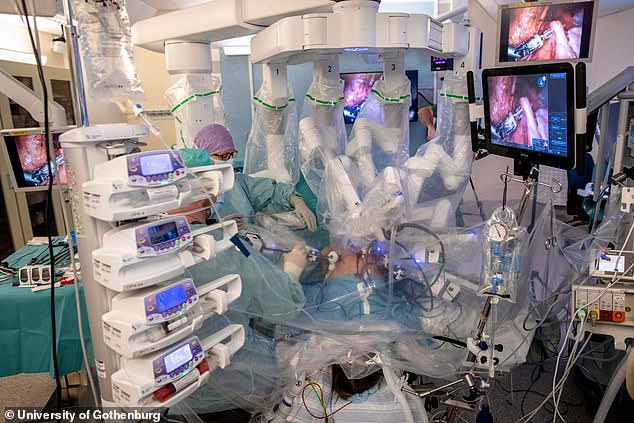
Scientists have, for the first time, used a robot to remove a woman’s womb before transplanting it into a woman who later became pregnant
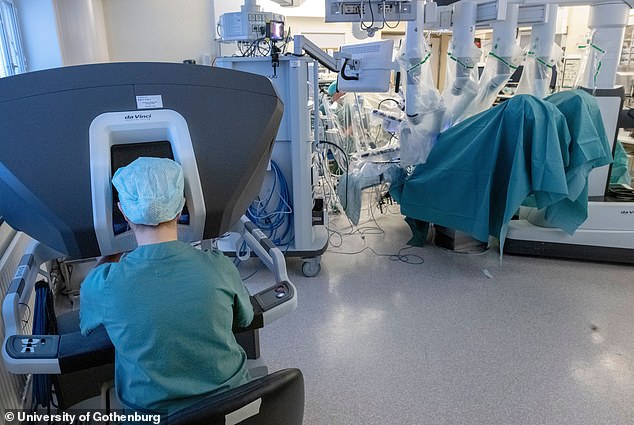
The robot can remove a donor’s womb using keyhole surgery through five holes which are just 1cm wide, reducing how much blood they lose and speeding up their recovery afterwards
Five other women have undergone womb transplants through robotic surgery at the University of Gothenburg. However, none of them have yet to become pregnant.
Using surgical robots allows the procedure to be done through five 1cm-wide holes in the donor’s body – unlike much bigger cuts needed by human surgeons.
This leads to the patients losing less blood and spending less time in hospital after donating their womb, the experts say.
Eight of the 14 babies born after uterus transplants have been born in Sweden, with others in the US, Brazil, Serbia and India.
The robotic breakthrough comes after another world-first last year, in which it was revealed a baby had been born from a uterus transplanted from a dead donor.
The life-changing surgery is carried out on women who are unable to have children naturally – for example, those with Mayer Rokitansky Küster Hauser, a condition which means they are born without a womb.
‘I think robotic surgery has a great future in this area,’ said Professor Mats Brännström, a world-leading researcher in the field.
He added: ‘We haven’t saved as much time as we thought we would, but we gained in other ways.
‘The donor loses less blood, the hospital stay is shorter, and the patient feels better after surgery.’
The robot is controlled by two surgeons who use joysticks which convert their movements into millimetre-precise motions in the robot arms.
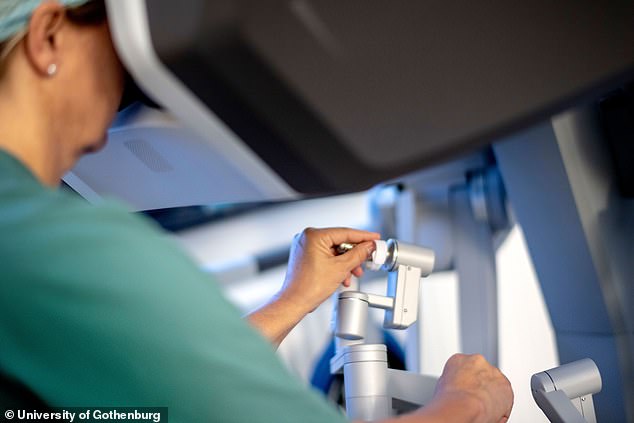
Surgeons control the robot using joysticks which move instruments inside the patient’s body – hand movements are converted to extremely precise motions
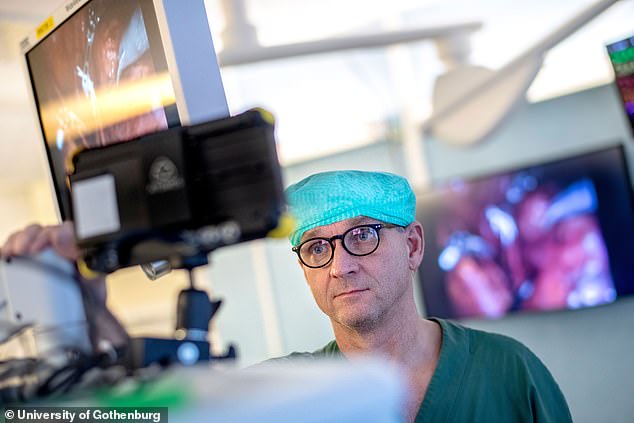
The technology is being pioneered by Professor Mats Brännström (pictured), who said: ‘I think robotic surgery has a great future in this area’
Accessing the donor’s body through keyhole incisions means the procedure is less damaging than traditional operations.
Details were published in December of the world’s first baby to be born to a mother whose womb was transplanted from a dead donor.
The successful pregnancy of 32-year-old Fabiana Amorim de Lima, from Brazil, marked a breakthrough in fertility treatment.
Her eggs had been frozen before the operation and, after she started having regular periods following the womb transplant, she was impregnated using IVF.
Luisa Santos was born by c-section in December 2017, 35 weeks into the pregnancy.
Doctors said the use of a dead woman’s womb offered hope for future mothers-to-be because it meant it would be easier to find a willing and suitable donor.
Ten previous attempts, in the US, Czech Republic and Turkey, to transplant a womb from a dead donor had ended in failure.
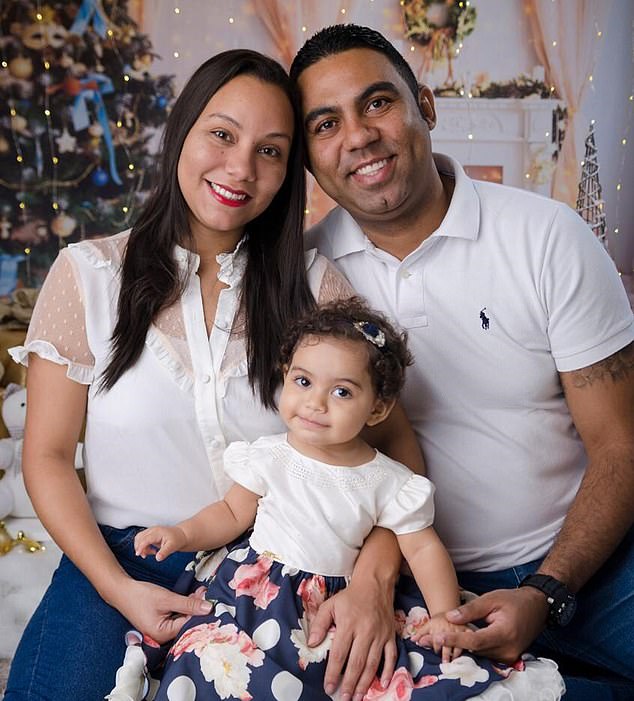
The birth of Luisa (centre) – performed in a Brazilian hospital – paves the way for British surgeons to replicate the pioneering procedure within a matter of weeks. She is pictured here with her parents Fabiana Amorim de Lima and Claudio Santos
Luisa’s delivery last December – in which she weighed 5lb 10oz – proved the procedure can be carried out safely using a dead donor’s womb.
Spurred on by the breakthrough, UK surgeons are planning the first womb transplants in this country this year.
At least 15,000 women in Britain of childbearing age were born without a womb or have had it removed due to cancer or other illness and could benefit.
